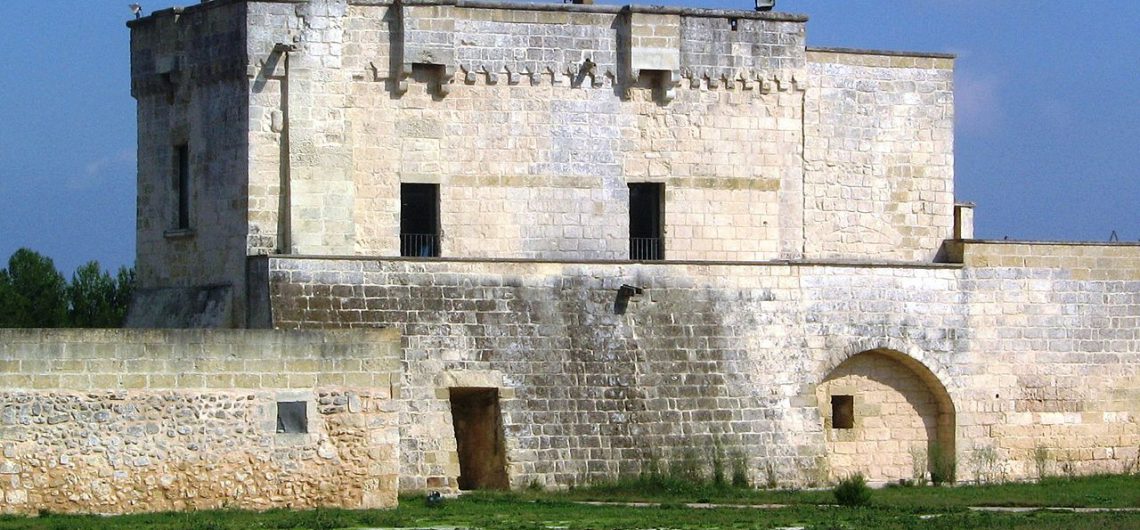An extraordinary economic engine for tourism in Puglia is represented by masseries, a symbol of peasant civilization deeply linked to the history of Puglia and the South. These are structures born between the sixteenth and eighteenth centuries by the need to ensure better care and administration of farmland cultivated by farmers. Their birth is the product of the baronial colonization of large rural areas that are either deserted or abandoned. These farmhouses were all built according to the same criterion, divided into two parts: the highest for the lord’s residence, and the lower where the peasant houses were occupied and the work area intended for stables or work tool storage. A large entrance door allowed access to the courtyard to the carriages and wagons. The buildings were surrounded by imposing walls, large gardens and usually a chapel overhanging a vast area cultivated with olive trees or vines.
The history of Salento is a story of subjugations to the alien, of external domination that shaped the local identity. From that legacy, Salento has been able to capture the most intense force, beginning with a monumental restoration of traditions and ancient rural structures. The farms have been refurbished, transformed into cozy places where they spend days in the nature of nature and healthy farming habits. Around the world so well-known to the past generations, a successful business travel model has emerged, a model popular with foreign visitors. Thus Salento has been able to make sense of centuries of suffering, realizing its own, personal and social redemption.
The territory included in the triangles Lecce, San Cataldo and Roca Vecchia is characterized by fortified farmhouses set along old road aisles, with the hearty Acaya Castle in the center. On the road that leads from Lecce to the fortified citadel, there are Masseria Zundrano, Masseria Carrozzina, Masseria Specchia Mezzana and Masseria Reca, which are characterized by tower buildings with cascades and lifting bridges.
In defense of Acaya there are some mighty fortified farms, such as the Masseria Cesine and Masseria Tenuta Santicuti inserted by WWF in the oasis that takes its name, Masseria Favarella and Masseria Li Candi. This is one of the areas most exposed to the danger of pirate raids, due to the low coast, and this has made it imperative for fortified farmhouses to be located shortly from one another.
The area, between Roca Vecchia and Torre Sant’Andrea, is protected by massive masseries such as Masseria Incioli, Masseria Carleo and Masseria San Basilio and, more south, Masseria Porcaccini, Masseria Sbotta, Masseria Nova, Masseria Giammarrino, today organized in Accommodation and popular restaurant Masseria Calavaggi with its two towers and then Masseria La Brunese, Masseria Grande and Masseria Lama.
Salento is also widely populated by these structures: Ad Acquarica is the Masseria di Gelsorizzo, a monumental fortified farm dating back to the first half of the 16th century, consisting of some cattle or crop rooms and a square tower with slots And caduits. Going up to Tiggiano you will find the Masseria Matine, situated on a large plain surrounded by olive groves; It consists of a fortified tower, an inner courtyard, a garden with a dove tower and several rooms for animals or the storage of materials and crops. At Specchia, on the ridge of a greenhouse, is located the Masseria Cardigliano, better known as Borgo Cardigliano: it was built in the Fascist era and was destined for the production of tobacco. The farm consists of some housing units, a church, some stables, storage rooms, tobaccos, and a space for collective use. Ruffano is the homonymous Masseria Cardigliano di Sotto, which consists of two structures: the valley, built in 1408, used by the massar and the one on the ridge of the greenhouse, used for sheep breeding. Finally, moving to the territory of Taurisano we find: Masseria Bianca, so called for the color of its plaster; Masseria Grande, built in the 16th century, but now in ruins; Varano’s farmhouse, with some traces of a Byzantine settlement and a fortified structure.

